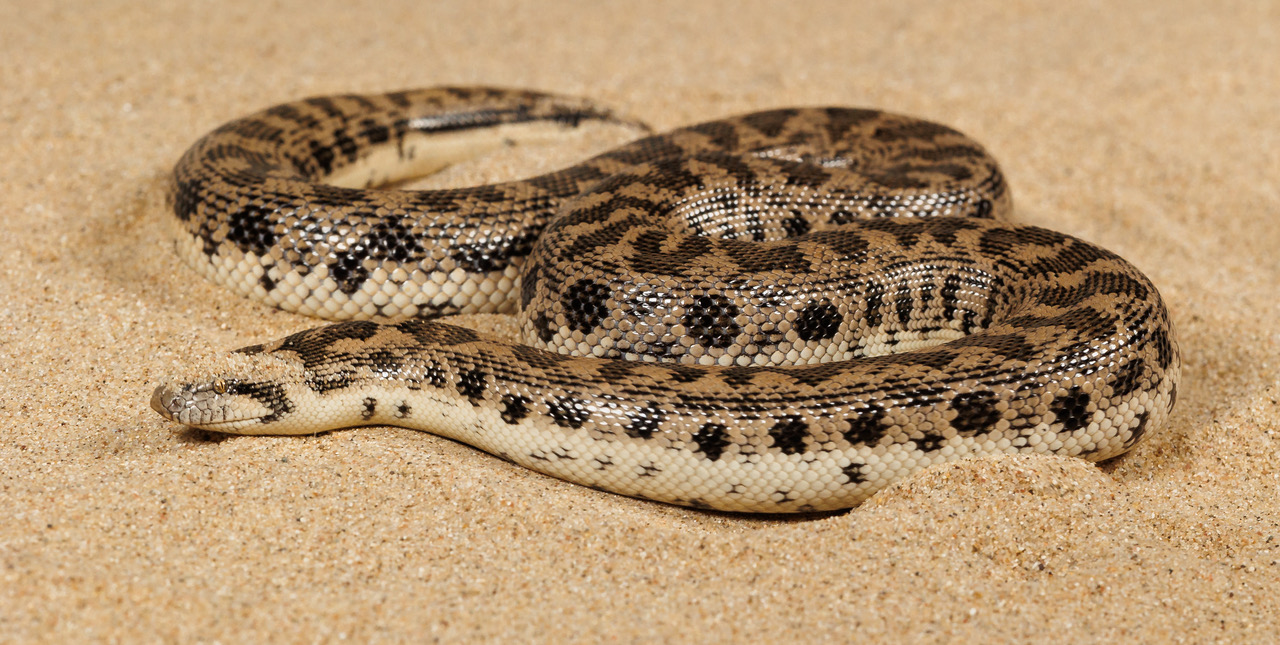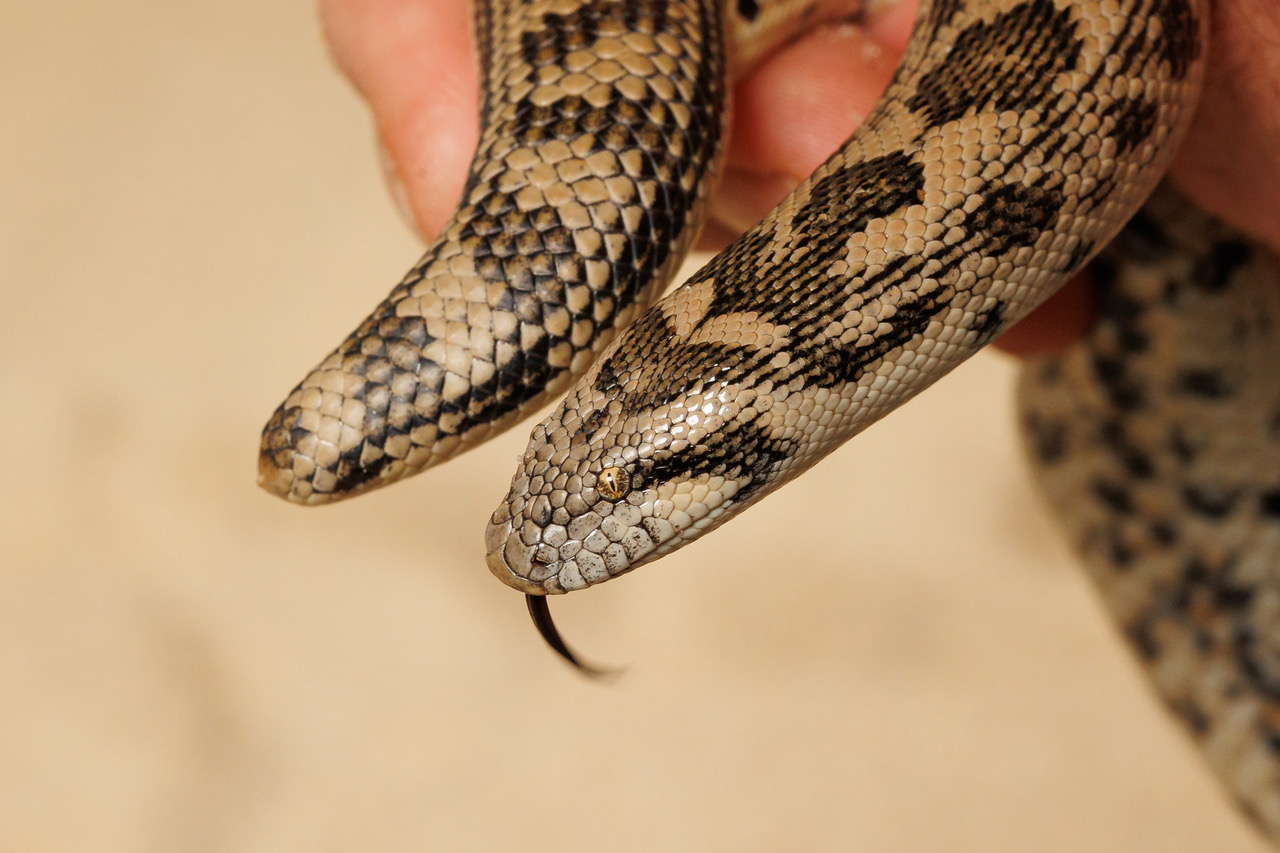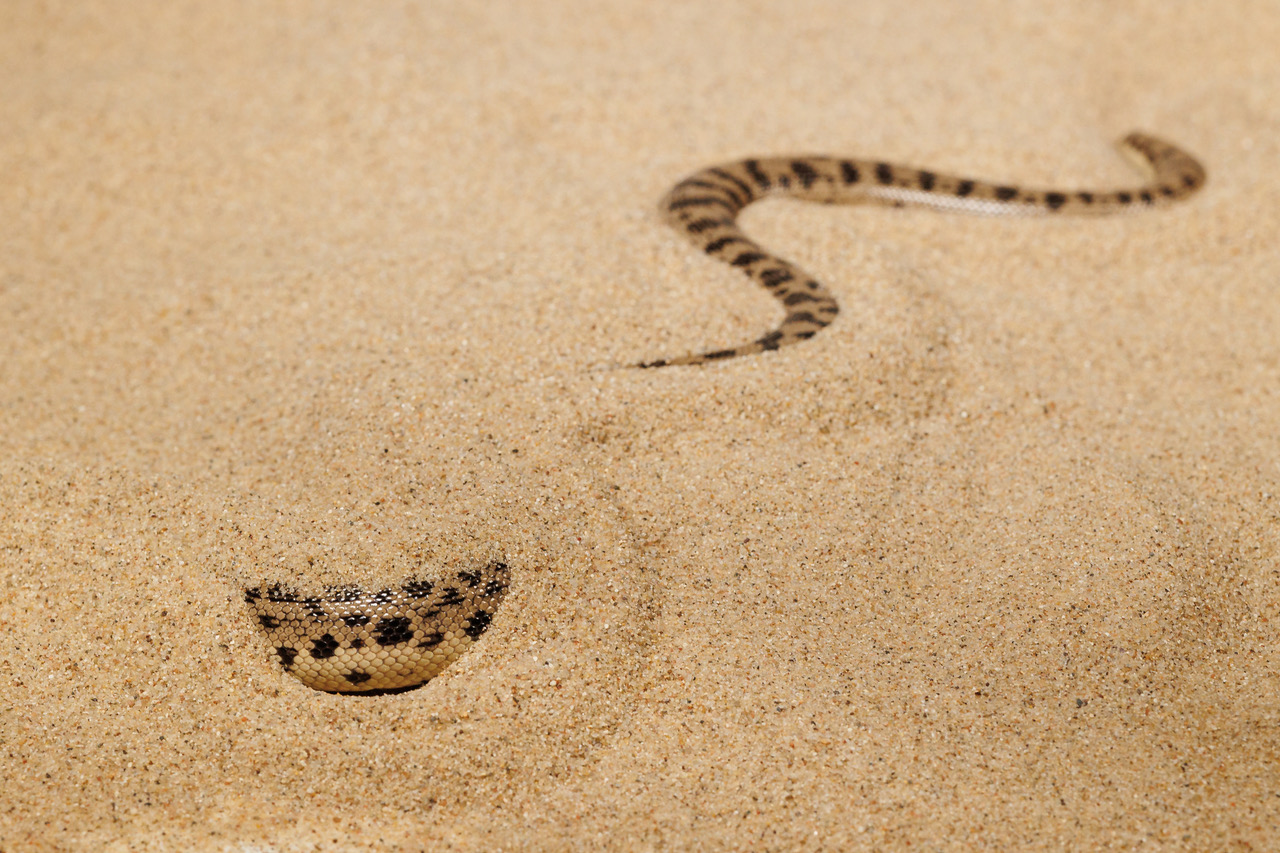
Photographing Tartar sand boa was a challenge: it immediately disappeared into the sand. Photo Miroslav Bobek
The mystical olgoi-khorkhoi was once a great mystery. This is no longer the case; we know the truth about it. Now you can even come and see the animal, which used to be its archetype.
But first, let’s summarize the amount of information on olgoi-khorkhoi have been collected by various researchers. Here we are: It is supposed to resemble a large intestine filled by blood and most often it is referred to as a sand worm. After all, both is included in its Mongolian name, where “olgoi” means large intestine and “khorkhoi” means worm. The fact that both ends of olgoi-khorkhoi look the same supports these comparisons; it has no noticeable head or tail. Its dimensions are told to vary from a half to one-and-half metre and it is said to live in the sand dunes of Mongolian Gobi. There it is buried in the sand, but in June and July it appears on the surface. When moving, it does not slither forward but moves as if rolling to the side. It is extremely dangerous: It can kill a person on a distance of several metres. Perhaps it spews a poison, perhaps it generates an electric discharge. At the same time before attacking, it raises one end of the body and changes its colour.

The curator of reptiles Petr Velenský shows the head and the tail of Tartar sand boa at the same time. Photo Miroslav Bobek
The Russian palaeontologist and writer I. A. Yefremov, who got to know Mongolia very well, wrote in the 1940s about olgoi-khorkhoi: “It is a legend, but so widespread among the Gobi inhabitants, that this mysterious worm is in various regions described identically down to smallest details. It would lead one to believe that the core of the legend is true. It seems that there is indeed a strange creature still unknown to science living in the Gobi Desert – perhaps a relic of ancient inhabitants of Earth, extinct a long time ago.”
However, decades of exploration did not lead to any discovery of a creature unknown to science. And they could not. Olgoi-khorkhoi was created by the superstition and fantasy of Mongolian herders, from a creature that they can meet only rarely and that is outside of their everyday experience – Tartar sand boa. It is this snake which corresponds to most of the characteristics of olgoi-khorkhoi, which I described in the opening paragraphs. The only exception is inflating a part of the body before an attack, changing colour and of course the ability to kill a person from a distance.

Tartar sand boa literary swims into the sand. Photo Miroslav Bobek
Tartar sand boa lives in Mongolia approximately in the same areas where olgoi-khorkhoi should occur, and like olgoi it appears mostly in the fullness of summer. Indeed, it moves in a peculiar way; it slips into a sand and disappears into it after a few waves. Males usually measure up to half-a-metre, and females usually don’t exceed 70 cm, but some individuals can reach a length of over a metre. Well, that is a real “worm”! The coloration of the Tartar sand boa is very variable, so with a bit of imagination it can also resemble a “large intestine filled by blood”. However, the most important thing is that the Tartar sand boa has a thick, cylindrical body, so with a brief survey it is hard to distinguish the head from the tail. It has to do not only with digging its way under the surface but also with defence. When threatened, it can hide its head and expose the tail to the enemy. Besides defecation it is also able to excrete strong-smelling cloacal secretions. There are no doubts! The correspondence with the descriptions of olgoi-khorkhoi is extraordinary!
After all, come and see the Tartar sand boa alias olgoi-khorkhoi with your own eyes. From today you can see it in the newly opened Gobi exhibit in Prague Zoo.
Written By: Miroslav Bobek

